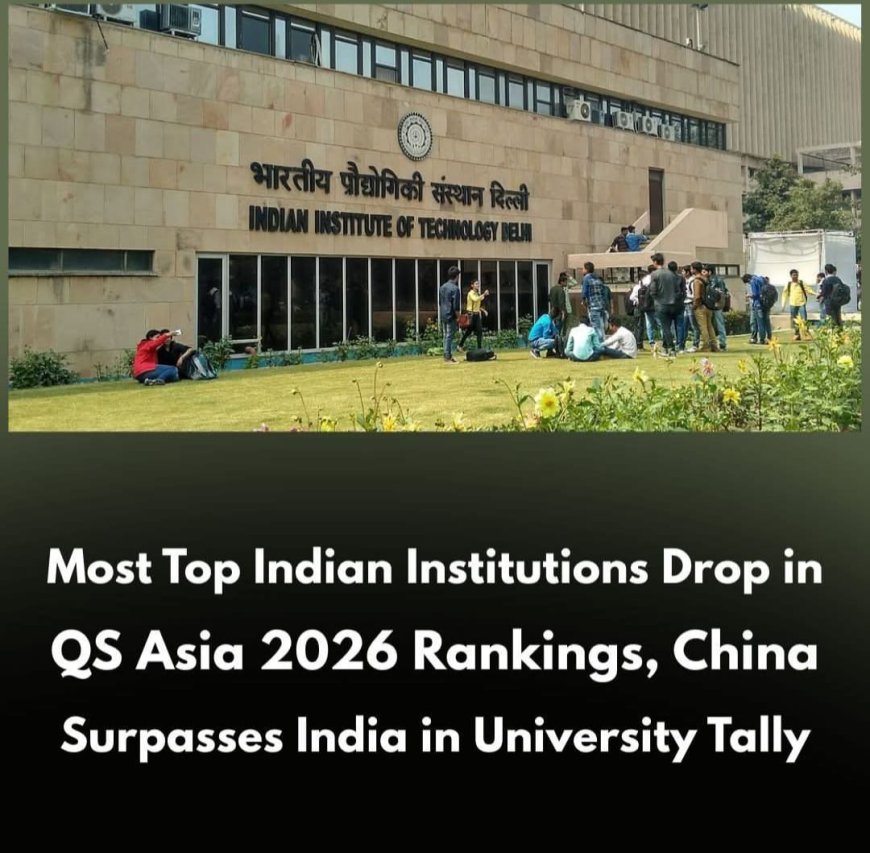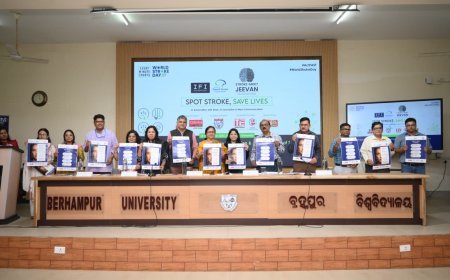Most Top Indian Institutions Drop in QS Asia 2026 Rankings, China Surpasses India in University Tally

In a stark reflection of shifting academic dynamics across Asia, nine of India’s top 10 universities—including seven prestigious Indian Institutes of Technology (IITs)—have slipped in the Quacquarelli Symonds, QS Asia University Rankings 2026. Meanwhile, China has overtaken India as the most-represented nation in the rankings, underscoring a growing eastward tilt in higher education excellence.
IIT Delhi Retains Top Spot in India, But Falls Sharply
IIT Delhi continues to lead Indian institutions for the second straight year, yet it plummeted 15 places to 59th—the lowest position in recent years for the institute. IIT Bombay suffered the steepest decline among the top 10, dropping 23 ranks to 71st, ending its four-year reign (2021–2024) as India’s highest-ranked university.
Five IITs—Delhi, Madras, Bombay, Kanpur, and Kharagpur—recorded their worst rankings in recent memory. The sole bright spot among India’s elite was Chandigarh University, which climbed from 120th to 109th.
East and Southeast Asia Dominate the Podium
The global top spots were claimed by:
- 1st: University of Hong Kong
- 2nd: Peking University (China)
- Joint 3rd: National University of Singapore and Nanyang Technological University
Institutions from Hong Kong, Mainland China, Singapore, South Korea, and Malaysia occupy nearly the entire top 20, signaling a concentrated surge in performance from these regions.
- “The 2026 edition reflects a clear eastward concentration of top performance, driven by sustained improvement in East and Southeast Asian higher education systems,” QS told The Indian Express.
Indian Strengths Mask Critical Weaknesses
Despite rank declines, nine of India’s top 10 institutions improved their total scores year-on-year. India excels in:
- Academic and employer reputation
- Proportion of staff with PhDs
- Papers per faculty
However, systemic gaps in key metrics are dragging institutions down:
QS highlighted that low citation impact points to “reduced research visibility or fewer highly cited outputs,” while poor faculty-student ratios reflect “large class sizes and resource constraints.” Near-absent international diversity—both in students and faculty—puts Indian institutions at a “structural disadvantage” compared to peers in Singapore, Hong Kong, and South Korea.
Expanded Rankings Intensify Competition
This year’s edition is the largest yet, featuring 1,529 institutions—including over 550 newcomers. China added 261 new entries, pushing its total to surpass India’s 294 (up by 137). The influx has heightened volatility: 67% of the 157 Indian universities ranked last year fell in position.
South Korean heavyweights like Yonsei University and Korea University cracked the top 20, while Malaysia’s Universiti Malaya and Universiti Putra Malaysia also gained ground.
The Road Ahead for Indian Higher Education
QS noted that while Indian institutions “retain strong reputations,” they face intensifying competition in research impact, faculty resources, and international engagement. Accelerating global collaborations, boosting research output quality, and attracting international talent will be critical for India to reclaim momentum.
As Asia’s academic landscape evolves, the 2026 rankings serve as both a wake-up call and a benchmark—urging Indian universities to address structural bottlenecks to compete with their high-performing regional rivals.
Sanjay Pattnayak
Sundargarh














































